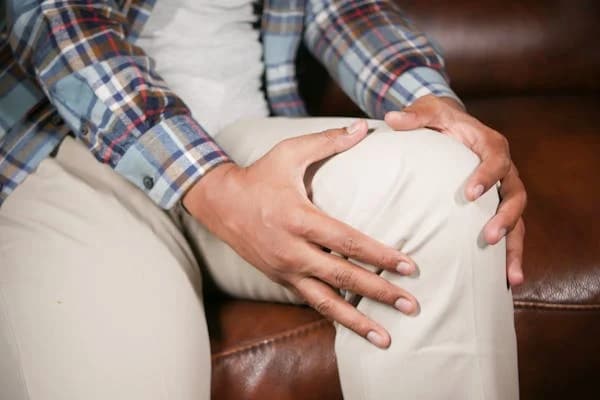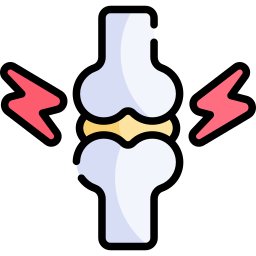Stem cell treatment for arthritis has emerged as a safe and effective therapeutic option for patients diagnosed with this condition.
Arthritis is one of the most common joint conditions characterized by pain and swelling in the joints, resulting in the restriction of movements. Current treatments available for the management of arthritis usually involve taking painkillers and other medications on a regular basis. However, these treatments are known to cause serious side effects.
This is why patients are looking for safer alternatives to reduce the need for medication and improve their prognosis.
This article discusses the safety and effectiveness of stem cell treatment for arthritis and provides answers to common questions, including how the treatment works and the outcomes you can expect
Why Use Stem Cells to Treat Arthritis?
Arthritis is a chronic, progressive condition affecting the joints. It is characterized by pain and inflammation in the tissues of the joint.
There are several forms of arthritis, such as osteoarthritis, rheumatoid arthritis, and gouty arthritis. These conditions develop as a result of a number of factors, including aging, obesity, autoimmunity, metabolic dysfunction, and genetics.
Stem cell treatment for arthritis offers higher effectiveness compared to conservative treatments currently recommended for managing this condition. The current treatments for arthritis include the use of medication, such as painkillers and corticosteroids, that provide only short-lasting relief. Also, these drugs do not help slow down the progression of joint damage and may cause serious side effects, especially when they are used for a long time.
Stem cell therapy, on the other hand, can provide long-lasting relief from the symptoms of arthritis while also slowing down or inhibiting the progression of joint damage. This is the most common reason why most patients choose stem cell treatments for arthritis.
Stem cell therapy offers a safer alternative as it does not cause side effects commonly associated with pain-relieving drugs and corticosteroids. In addition, it may also help patients avoid the need for surgical interventions, such as knee replacement or hip replacement, by supporting the regeneration of new cells in the affected tissues.
Stem cells produce an anti-inflammatory and immunomodulatory effect. This can relieve pain and swelling in the affected joint, restoring its normal range of motion. The immunomodulatory effect can be particularly beneficial for patients who suffer from autoimmune joint conditions such as rheumatoid arthritis or psoriatic arthritis.

What are the Benefits of Stem Cell Therapy for Arthritis?
Most cases of arthritis, especially osteoarthritis and rheumatoid arthritis, progress gradually, resulting in significant damage to the joint. The affected joints usually do not heal spontaneously.
For example, osteoarthritis often affects the hip and knee joints, typically leading to the loss of protective covering called the periosteum present at the ends of bones. The loss of this protective covering exposes the bone tissue to frequent friction while moving legs. As a result, the damage to the joints continues to occur on a regular basis, allowing the disease to progress.
If not treated in a timely manner, osteoarthritis can significantly restrict the mobility of the patient.
Stem cell therapy can be beneficial in these cases as the treatment can support the regeneration of the affected tissue, including the periosteum.
Some benefits of stem cell treatment for arthritis include:
Regenerative effect
Mesenchymal stem cells (MSCs) have the potential to divide and proliferate to form healthy and mature cells, which can take the place of the inflamed and damaged tissues of the joint, thus restoring its normal structure and range of motion.
Stem cell therapy for arthritis may also improve the articular cartilage lesions associated with osteoarthritis.
Slows degeneration
The effectiveness of stem cell therapy is established by research that demonstrated the anti-degenerative potential of MSCs. These cells can slow down degenerative changes in the joints associated with the wear and tear caused during routine activities and support healing.
Regulates immune system
Stem cell therapy for arthritis can regulate the functions of the immune system and prevent autoimmune activities responsible for the development of rheumatoid arthritis. This can help reduce inflammation and provide relief from the symptoms of rheumatoid arthritis, including pain and stiffness in the joints.
Ease of harvesting
Mesenchymal stem cells needed for this therapy are relatively easy to collect from the patient or a donor, making the procedure less invasive and more convenient compared to other regenerative treatments.
Wider application
What makes stem cell treatment for arthritis beneficial is that it is suitable even for patients in the middle or last stages of the disease. This means that individuals who might not respond well to traditional treatments can still experience significant improvements in pain and function, which offers new hope for patients seeking effective relief.
Improved quality of life
Arthritis stem cell therapy can improve the quality of life of patients by reducing pain and improving joint mobility.
In addition, it can also reduce the need to use painkillers and steroids that are known to cause serious side effects.
Get a free online consultation
Contact us to learn about the expected results of the treatment, its cost and duration.

Medical Advisor, Swiss Medica doctor
What Types of Stem Cells Can Treat Arthritis?
Most patients with arthritis are treated with mesenchymal stem cells. These are multipotent stem cells that have the ability to differ into other cell types, including the cells that make up the bones and joints called osteocytes.
Multipotent mesenchymal stem cells can differentiate into different cells in tissues. These cells can also reproduce themselves. This unique property of arthritis stem cell therapy helps stimulate joint regeneration and promote the restoration of healthy tissue.
MSCs for arthritis treatment can be harvested from the patient’s own body. This is called autologous cell harvesting. Some patients are treated with allogeneic cell products derived from healthy donors.
The results of stem cell injections for arthritis are better when the treatment is started at the early stage of the disease before the deformation of the joint has occurred.
Disadvantages of Using Stem Cells to Treat Arthritis
Stem cell therapy for knee arthritis is comparatively safer than conventional treatments. There are no serious side effects of this treatment.
However, some patients have reported experiencing mild pain and redness at the site of stem cell injections for arthritis. Some other side effects include fever and fatigue. These symptoms are usually temporary and resolved within a few days.
Best Stem Cell Clinic for Stem Cell Therapy for Arthritis
Swiss Medica is one of the best stem cell clinics for arthritis. We have a team of stem cell experts and other medical professionals with extensive experience in regenerative medicine and advanced facilities where you can get the best stem cells for arthritis treatment for managing your condition.
Why Choose Swiss Medica for Stem Cell Treatment for Arthritis?
At Swiss Medica, we offer an advanced approach for stem cells for arthritis treatment that caters to patients at all stages of the disease:
- A free, no-obligation online consultation with doctors before the treatment;
- Expert medical team with profound experience;
- Personalized treatment plan that includes pre- and post-treatment care;
- All-inclusive support that covers travel assistance and medical guidance;
- Comfortable hotel-like setting at the clinic;
- In-house lab providing fresh stem cells;
- Rigorous quality control at every step of stem cells production and infusion;
- Extensive selection of ethical stem cells and delivery methods for greater efficiency;
- Convenient location of the clinic in Serbia;
- Positive feedback from our patients reporting improvements in their symptoms.
Stem Cell Treatment for Arthritis Cost
Stem cell treatment for arthritis costs range between €7,000 to €31,000* depending on the stage of the disease, the extent of joint damage, and the number of injections needed to heal the joints.
You can consult with our stem cell experts to get an accurate estimate of costs based on your symptoms and investigation reports.
*The prices mentioned are indicative and subject to change based on individual factors, including the condition’s severity and the number of stem cells needed. Prices are valid as of January 2025.
Real Patient Stories
Madelene Drake
Madelene Drake, a patient from the UK, has been managing osteoarthritis in her hips for over seven years. She first visited Swiss Medica in 2019 to treat her right hip, which was in an advanced stage of osteoarthritis (stage 3-4). The stem cell therapy successfully delayed her need for a hip replacement. In February 2022, she returned for a second visit to protect her left hip, which is still in the early stages of the condition.
Initially nervous about seeking treatment abroad, her concerns quickly eased upon arrival at the clinic in Belgrade. The skilled medical team and comprehensive care, including daily tests, vitamin infusions, and other therapies, made her feel safe and well-cared for throughout the process. During this visit, she received stem cell injections in her hip and hyaluronic acid injections in both knees.
Madeline’s confidence in the clinic and the stem cell treatment has only grown, and she would recommend Swiss Medica to anyone with chronic conditions.
“I was initially nervous about going abroad for stem cell treatment, but from the moment I walked in, I felt cared for and safe. The medical staff are highly skilled, and I’m convinced the stem cell therapy will save my left hip, just like it delayed the need for a replacement in my right hip.”
The Success Rate of Stem Cell Therapy for Arthritis at Swiss Medica
Up to 80% of patients treated at Swiss Medica have expressed satisfaction with the outcomes they achieved, including the patients with stem cell injections for hip arthritis and other forms of arthritis. The high success rate of stem cell therapy at our clinic is attributed to our skilled and experienced stem cell experts who work dedicatedly to provide the best possible treatments to our patients.
Can Stem Cells Cure Arthritis?
There is no clinical evidence to prove that stem cells can cure arthritis. However, it can definitely improve the prognosis and inhibit the progression of joint damage associated with different forms of arthritis, as discussed below.
Stem cell therapy for arthrosis
Stem cell therapy for arthrosis, also called osteoarthritis, works by producing anti-inflammatory and regenerative effects.
The treatment helps to reduce pain and inflammation in the joint. This helps restore the normal structure and function of the affected tissue. Stem cells for post-traumatic arthritis or arthrosis might also slow down the further wear and tear of the joints associated with aging and routine activities.
Stem cell therapy for osteochondrosis
Stem cell therapy can be effective in the management of osteochondrosis. It is a self-limiting developmental anomaly associated with bone growth. It primarily involves the center of ossification in the epiphysis.
Stem cell therapy can provide relief from the symptoms of this condition by stimulating the regeneration of healthy bone cells called osteocytes.
Stem cell therapy for rheumatoid arthritis
Stem cell therapy primarily works by producing an immunomodulatory effect. This helps to regulate the activities of the immune system and prevent an autoimmune response, which is implicated in the development and progression of rheumatoid arthritis.
Stem cell treatment for psoriatic arthritis
Psoriatic arthritis is another autoimmune condition that can be managed effectively using stem cells. The regenerative and immunomodulatory properties of mesenchymal stem cells can reduce the joint damage associated with psoriatic arthritis and provide relief from pain and stiffness.
Stem Cell Research for Arthritis
The findings of research on stem cells for knee arthritis have provided sufficient evidence to suggest that this treatment might improve or resolve arthritis symptoms, leading to reduced pain and enhanced joint function.
The positive outcomes of arthritis treatment with stem cells can be attributed to the ability of MSCs to promote the body’s natural regenerative capabilities to heal damaged tissues of the joints, offering a safer alternative to alleviating pain and restoring joint function.
What’s the Outlook for Stem Cell Therapy for Arthritis?
The arthritis stem cell therapy offers potentially safer and more effective ways for the management of joint conditions, including osteoarthritis, rheumatoid arthritis, psoriatic arthritis, and gout arthritis.
Although several studies have established the safety and effectiveness of stem cell injections for shoulder arthritis and other conditions, it is important to acknowledge that further research is needed to get a more comprehensive picture of what you can expect from the therapy.

It is also important to note that the results of arthritis treatment with stem cells vary among different patients. They depend on the patient’s age, the stage of the disease, the extent of joint damage, and the severity of symptoms.
Nevertheless, most stem cell treatments, including stem cell injections for hip arthritis and stem cell injections for shoulder arthritis, suggest the potential for symptom improvement and a favorable safety profile.
Hence, it can be said with reasonable certainty that arthritis treatment with stem cells represents a cutting-edge treatment option for arthritis patients.
Frequently Asked Questions About Stem Cell Treatment for Arthritis
1. What is stem cell treatment for arthritis?
Stem cell treatment involves using stem cells to repair and regenerate damaged tissues in the joints. Mesenchymal stem cells (MSCs) are commonly used due to their ability to differentiate into various cell types, including bone, cartilage, and fat cells. Also, they release growth factors that help reduce inflammation and promote tissue healing. This treatment offers a promising alternative for patients seeking to alleviate arthritis symptoms and improve joint function treatment with stem cells for knee arthritis and other conditions. This way, patients avoid undergoing invasive surgeries and taking medications with serious side effects.
2. Does Stem Cell Therapy Work for Arthritis?
Yes, stem cells work for osteoarthritis and rheumatoid arthritis by producing regenerative and anti-inflammatory effects. In addition, it can help improve the symptoms of rheumatoid arthritis and psoriatic arthritis by producing an immunomodulatory effect.
3. What to expect after stem cell therapy?
When mesenchymal stem cells (MSCs) are introduced into the patient’s body, they actively produce growth and anti-inflammatory factors. Stem cell therapy for knee arthritis and other conditions can help reduce symptoms, such as pain, swelling, and stiffness, promote remission, improve joint mobility, and eliminate discomfort during movement.
In the long run, stem cells for post-traumatic arthritis and other types of arthritis can significantly enhance a patient’s health and quality of life.
4. What types of arthritis can be treated with stem cell therapy?
Stem cell therapy is primarily used for osteoarthritis, a degenerative joint disease caused by the breakdown of cartilage. It may also be used for rheumatoid arthritis, gouty arthritis, and psoriatic arthritis. Stem cell therapy aims to reduce inflammation, repair damaged tissues, and improve overall joint function in these and other forms of arthritis.
5. Is a stem cell cure for arthritis possible?
Stem cell therapy cannot fully cure arthritis, but it has shown promise in reducing pain, improving joint function, and potentially slowing the progression of the disease. The therapy works by promoting the repair and regeneration of damaged tissues in the joints. While results vary from patient to patient, many people experience significant relief, but it’s not considered a complete cure for arthritis at this time.
Contact us
You can contact our Medical Advisor to find out about the expected results of stem cell treatment according to your case, its cost, duration, and some other details.
List of References:
Senthelal, S., Li, J., Ardeshirzadeh, S., & Thomas, M. A. (2023). Arthritis. In StatPearls. StatPearls Publishing.
Wasserman A. M. (2011). Diagnosis and management of rheumatoid arthritis. American family physician, 84(11), 1245–1252.
Thoene, M., Bejer-Olenska, E., & Wojtkiewicz, J. (2023). The Current State of Osteoarthritis Treatment Options Using Stem Cells for Regenerative Therapy: A Review. International journal of molecular sciences, 24(10), 8925. https://doi.org/10.3390/ijms24108925
Orth, P., Rey-Rico, A., Venkatesan, J. K., Madry, H., & Cucchiarini, M. (2014). Current perspectives in stem cell research for knee cartilage repair. Stem cells and cloning : advances and applications, 7, 1–17. https://doi.org/10.2147/SCCAA.S42880
Davatchi, F., Sadeghi Abdollahi, B., Mohyeddin, M., & Nikbin, B. (2016). Mesenchymal stem cell therapy for knee osteoarthritis: 5 years follow-up of three patients. International journal of rheumatic diseases, 19(3), 219–225. https://doi.org/10.1111/1756-185X.12670
Heino, T. J., & Hentunen, T. A. (2008). Differentiation of osteoblasts and osteocytes from mesenchymal stem cells. Current stem cell research & therapy, 3(2), 131–145. https://doi.org/10.2174/157488808784223032
Estes, B. T., Diekman, B. O., Gimble, J. M., & Guilak, F. (2010). Isolation of adipose-derived stem cells and their induction to a chondrogenic phenotype. Nature protocols, 5(7), 1294–1311. https://doi.org/10.1038/nprot.2010.81
Zhang, S., Yap, A.U.J. & Toh, W.S. Stem Cells for Temporomandibular Joint Repair and Regeneration. Stem Cell Rev and Rep 11, 728–742 (2015). https://doi.org/10.1007/s12015-015-9604-x
Zhang, S. Y., Xu, H. H., Xiao, M. M., Zhang, J. J., Mao, Q., He, B. J., & Tong, P. J. (2021). Subchondral bone as a novel target for regenerative therapy of osteochondritis dissecans: A case report. World journal of clinical cases, 9(15), 3623–3630. https://doi.org/10.12998/wjcc.v9.i15.3623
Freitag, J., Wickham, J., Shah, K., & Tenen, A. (2022). Real-world evidence of mesenchymal stem cell therapy in knee osteoarthritis: a large prospective two-year case series. Regenerative medicine, 17(6), 355–373. https://doi.org/10.2217/rme-2022-0002
Medical Advisor, Swiss Medica doctor









